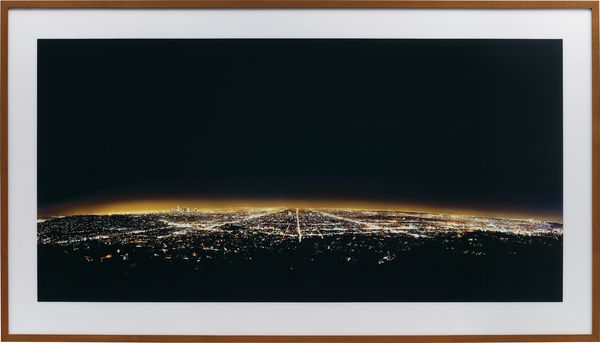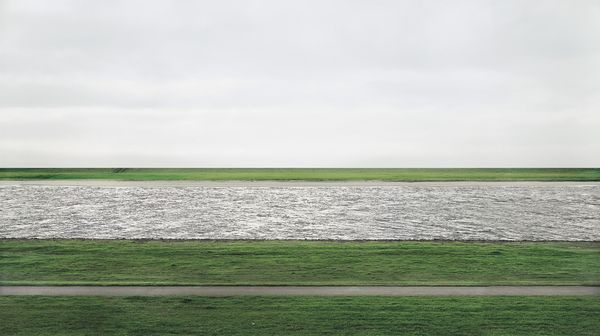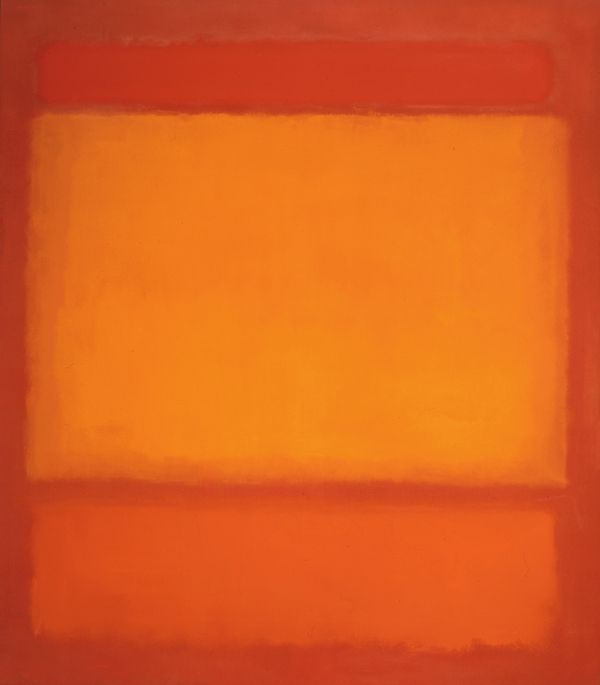Andreas Gursky Los Angeles, 1998-1999
Los Angeles, 1998-1999, is a rare and monumental masterpiece from the celebrated oeuvre of prolific photographer, Andreas Gursky. This work, only the second of the edition of six ever to be seen at auction, joins our fall Evening Sale in London on 6 October.
Breath-taking in its impactful splendour, the sheer scale of the three-meter-long Cibachrome print is a paragon of photography, an exemplary celebration of the possibilities of the medium. Among one of the largest examples of Gursky's photographic work, other examples from the edition are housed in the collection of the prestigious Harvard Art Museums and The Broad, Los Angeles. Other editions of large-scale photographic work, for example, Rhein II, have been purchased for some of the world's major institutions such as the Los Angeles County Museum of Art.
Phillips Senior Specialist Nathalie Zaquin-Boulakia discusses one of the largest, most mesmerizing examples of Gursky's photographic works.
With this work, Gursky chooses the iconic skyline of Los Angeles as his subject, transporting the viewer to a dark night overlooking the urban metropolis. Taking the photo from the Griffith Park Observatory in Los Angeles, Gursky's viewpoint gazes south over the city sprawl, presenting the thin capillaries of roads and streets which feed into the beating heart of the enormous city, rather than looking up to the heavens. Showcasing the grandeur of the scene, Gursky unveils a moment in time, suspended in his perfected tension between flatness and perspective, his capturing of localized detail lending itself to the overarching essence of sublime abstract composition. Executed in the same year as his comprehensive Fotografien 1994 – 1998 travelling exhibition, the work is a colossal spectacle, enveloping the viewer in the dramatic panorama.
Andreas Gursky Rhein II, 1999
Strikingly evident in Los Angeles is Gursky's accomplished mastery over the medium of photography, which the artist honed under the tutelage of Bernd and Hilla Becher at the Düsseldorf school. The pair's urban studies and industrial topography influenced Gursky’s own conceptual practice. To convey the sweeping vista of the Los Angeles skyline, Gursky used a traditional large-format view camera with a wide lens, allowing for a long exposure to harness the beautiful haze of light emanating from the city below. As well as depicting the vast horizon, Gursky also captures the geological curvature of the earth, accentuating the sheer enormity of the image in front of us. On closer inspection, what is also evident is the rich tapestry of incredible detail which develops in front of the viewer on a massive scale. Carefully selecting his scene, Gursky's composition is perfectly rendered to capture the harmony of the view, negating unnecessary details or embellishments. There are no superfluous elements in his Los Angeles portrait; rather, Gursky's composition achieves a perfect aesthetic equilibrium, traversing between abstraction and minute detail with the movement of the viewer's gaze. Gursky constructs new realities in his photographs: he removes unwanted elements, sometimes altering color schemes and digitally manipulating his images to best fit his vision. One of the first photographers to commandeer this technique, in one sense his photographs are designed, assuming a painterly, constructed quality.
Gursky's Los Angeles skyline is beguiling in its distorted perspective and hyper-clarity.
Gursky acts as a visual composer in the present work, pulling in deep black bands, strands of white and accents of warm orange to engulf the viewer in the lavish compositional harmony. Finer details reveal flecks of electric blue, scarlet red and emerald green which infer the story of the city's growth. The lower jet black section, which spans the length of the photograph, is punctuated by a delicate speckling of electric light which eventually bunches to form the graduations of the terrain below. From left to right we see the districts of Los Feliz, Downtown and Hollywood, with pylons, industrial buildings and skyscrapers interspersed throughout the scene. Grouped areas of dazzling yellow light appear like constellations, the city an urban cosmos, a galaxy of brilliant stars which scatter across the inky background. Scanning upwards towards the sky, a thin zip of hot light runs along the horizon, while arteries of luminosity run vertically and diagonally, all converging at the central vanishing point, the nucleus of the image.
Drawing upon the work of Barnett Newman, the horizon interjects the image, to be followed by a warm hue of fluorescence, which glows red like hot embers. The contrast between the sensual darkness and warm tonality is almost neon in appearance, the gradient of the glowing horizon swathing the sky until darkness is reached again. Here, Gursky plays with the effects of light, as explored in the work of Dan Flavin and James Turrell to accomplish an air of opulence in his monumental photograph.

Left: Barnett Newman Onement IV, 1949. Right: Installation photo of Dan Flavin, A Retrospective, at the Los Angeles County Museum of Art, 13 May - 12 August 2007. © Stephen Flavin / Artist Rights Society. Image: Scala, Florence
Playing with spatial effects, Gursky's Los Angeles skyline is beguiling in its distorted perspective and hyper-clarity. Captured from the hills of the valley, looking down into the basin which holds the city sprawl, the viewer is afforded a perspective normally impossible for the human eye. Unable to physically comprehend a panorama so vast and so clear, all at once, our sight is at once liberated, freed to absorb the scene in its absolute completeness. Highly aesthetic, the subtle amendment of perspective, evident in a number of Gursky's work such as Rhein II, emphasizes the flatness of the picture plane, juxtaposed with the intense detail which reveals itself on closer inspection. Such as in Ed Ruscha's long Hollywood landscapes, there is visual tension in Los Angeles between the flatness of the perspective and the positioning of the viewer.
However, in the present work, the viewer is hoisted into a privileged position, enjoying a God's-eye-view overlooking the City of Angels. Elevation, historically reserved for the wealthy or, mythically, for deities, forces the viewer to re-imagine their expectations of a typical skyline view of the city; Gursky emancipates our assumptions as Los Angeles is represented to us. The frenetic heartbeat of the city is captured in the stillness of the image, allowing the viewer a peaceful moment of reflection within the furore of the bright lights and traffic. By formalizing the geographical structure and cropping any superfluous details, Gursky's photograph levitates between hypnotic stillness and the vital rhythm of the buzzing city.
You never notice arbitrary details in my work. On a formal level, the countless interrelated micro and macro structures are woven together, determined by an organizational principle.
— Andreas Gursky
As if viewing the city from an airplane, the mind cannot help but reduce the overwhelming birds-eye view into an abstract canvas of color and form, like a patchwork of green fields or a knotted tangle of city streets. In the same way, Gursky's innovative genius lies in his encapsulation of the essence of a landscape or a busy scene, accentuating its formal and geometric qualities to create a calculated spectacle. Rather than omitting the intense ultra-detail, Gursky simply visually detracts from it through the sheer enormity of his works which render the subject quasi-abstract. As Gursky was quoted as saying in an Edinburgh catalogue in 1999, "You never notice arbitrary details in my work. On a formal level, the countless interrelated micro and macro structures are woven together, determined by an organizational principle."
As championed by the American Minimalists, such as Donald Judd and Agnes Martin, perspective and form are paired back, while detail is scaled down, and achieved in the present work through sheer scale. Producing pictures of both abundance and emptiness, Gursky's interest in abstract imagery resonates with the seascapes of Hiroshi Sugimoto, whose monochromatic photographs focus on nature's geometric quality through the visual marriage of air and sea. As in Mark Rothko's evocative canvases, the definition of the horizon, the central band of radiated color and textural planes in Los Angeles is emotive; the darkness of the city is both stimulating and frightening, while the fiery oranges of the city are both invigorating and intense. Intriguing and seemingly limitless, in Los Angeles, the viewer comes face to face with the boundless power and temporal expanse of our earthly surroundings.
Mark Rothko Red, Orange, Orange on Red, 1962. Saint Louis Art Museum, Missouri, USA. © 1998 Kate Rothko Prizel & Christopher. Image: Bridgeman Images
Continuing the dialogue of the German Romantics, Gursky explores the relationship between humans and our landscape, whether man-made or natural, in his photographic work. In Los Angeles, the seemingly tiny lights made by human activity appear out of proportion to the majesty of the dark atmosphere, the horizon above enhanced by the omnipresent perspective of the spectator. Humanity appears dwarfed by nature, the curvature of the earth reminding us of our inconsequential existence. Like Caspar David Friedrich's protagonists, the viewers of Gursky's Los Angeles stand before the work, confronting the enormity of nature, and are forced to question their place within it. Often adopting the scale and composition of historical landscape paintings, Gursky's work provides a forum for contemplative reflection, where we can look out onto the progress of human development. Neither critiquing the human footprint nor celebrating our technological advances, the work from our Evening Sale provides a realm for considered meditation where the scale of the earth in space assumes center stage.
Since the 1990s, Gursky has concentrated on photographing sites of commerce, industry and tourism, creating work which draws attention to today's burgeoning high-tech industry and global markets. In the present work, the choice of subject matter, namely Los Angeles, is poignant. A center of commerce, Los Angeles is the global epicenter of the fashion and entertainment industry. A place where affluence and prosperity are often excessively displayed despite the economic troubles faced by some of its poorest inhabitants, the highly aesthetic nature of the city, with its Hollywood signs, iconic boulevards and emphasis on fame, is abstracted and reduced to its very physical essence.
Redefining an iconic view of Los Angeles, the present work is a paradigm of modern photography, a quintessential work from Gursky's accomplished photographic practice. Getting lost in the starry bright lights of the cityscape, the viewer is prompted to question humanity’s place within the vast world we inhabit.


